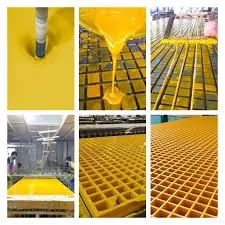
-
 Afrikaans
Afrikaans -
 Albanian
Albanian -
 Amharic
Amharic -
 Arabic
Arabic -
 Armenian
Armenian -
 Azerbaijani
Azerbaijani -
 Basque
Basque -
 Belarusian
Belarusian -
 Bengali
Bengali -
 Bosnian
Bosnian -
 Bulgarian
Bulgarian -
 Catalan
Catalan -
 Cebuano
Cebuano -
 China
China -
 China (Taiwan)
China (Taiwan) -
 Corsican
Corsican -
 Croatian
Croatian -
 Czech
Czech -
 Danish
Danish -
 Dutch
Dutch -
 English
English -
 Esperanto
Esperanto -
 Estonian
Estonian -
 Finnish
Finnish -
 French
French -
 Frisian
Frisian -
 Galician
Galician -
 Georgian
Georgian -
 German
German -
 Greek
Greek -
 Gujarati
Gujarati -
 Haitian Creole
Haitian Creole -
 hausa
hausa -
 hawaiian
hawaiian -
 Hebrew
Hebrew -
 Hindi
Hindi -
 Miao
Miao -
 Hungarian
Hungarian -
 Icelandic
Icelandic -
 igbo
igbo -
 Indonesian
Indonesian -
 irish
irish -
 Italian
Italian -
 Japanese
Japanese -
 Javanese
Javanese -
 Kannada
Kannada -
 kazakh
kazakh -
 Khmer
Khmer -
 Rwandese
Rwandese -
 Korean
Korean -
 Kurdish
Kurdish -
 Kyrgyz
Kyrgyz -
 Lao
Lao -
 Latin
Latin -
 Latvian
Latvian -
 Lithuanian
Lithuanian -
 Luxembourgish
Luxembourgish -
 Macedonian
Macedonian -
 Malgashi
Malgashi -
 Malay
Malay -
 Malayalam
Malayalam -
 Maltese
Maltese -
 Maori
Maori -
 Marathi
Marathi -
 Mongolian
Mongolian -
 Myanmar
Myanmar -
 Nepali
Nepali -
 Norwegian
Norwegian -
 Norwegian
Norwegian -
 Occitan
Occitan -
 Pashto
Pashto -
 Persian
Persian -
 Polish
Polish -
 Portuguese
Portuguese -
 Punjabi
Punjabi -
 Romanian
Romanian -
 Russian
Russian -
 Samoan
Samoan -
 Scottish Gaelic
Scottish Gaelic -
 Serbian
Serbian -
 Sesotho
Sesotho -
 Shona
Shona -
 Sindhi
Sindhi -
 Sinhala
Sinhala -
 Slovak
Slovak -
 Slovenian
Slovenian -
 Somali
Somali -
 Spanish
Spanish -
 Sundanese
Sundanese -
 Swahili
Swahili -
 Swedish
Swedish -
 Tagalog
Tagalog -
 Tajik
Tajik -
 Tamil
Tamil -
 Tatar
Tatar -
 Telugu
Telugu -
 Thai
Thai -
 Turkish
Turkish -
 Turkmen
Turkmen -
 Ukrainian
Ukrainian -
 Urdu
Urdu -
 Uighur
Uighur -
 Uzbek
Uzbek -
 Vietnamese
Vietnamese -
 Welsh
Welsh -
 Bantu
Bantu -
 Yiddish
Yiddish -
 Yoruba
Yoruba -
 Zulu
Zulu
frp demister equipment efficient fog elimination for
Efficient Fog Elimination with FRP Demister Equipment
Fog formation in industrial processes can be a significant issue affecting productivity, product quality, and the overall efficiency of operations. Addressing this challenge requires effective solutions, among which Fiber Reinforced Plastic (FRP) demister equipment has emerged as a leading option. This article explores the technology behind FRP demisters, their efficiency in fog elimination, and their benefits in various industrial applications.
Understanding FRP Demister Equipment
FRP demisters are advanced separation devices designed to remove liquid droplets from gas streams. Constructed from composite materials that are both lightweight and resistant to corrosion, these demisters are ideal for harsh chemical environments. The design typically includes a series of mesh pads or structured packing, which causes gas to flow through a tortuous path. This configuration promotes droplet coalescence, allowing small droplets to combine into larger ones, which are then removed from the gas stream.
The primary function of a demister is to improve air quality and prevent liquid carryover in vapor streams. By effectively eliminating fog, which is a common phenomenon caused by condensation, these devices not only protect downstream equipment but also enhance operational efficiency.
Mechanism of Fog Elimination
The efficiency of an FRP demister in fog elimination hinges on its capacity to promote droplet growth and facilitate their removal from the gas phase. When vapor containing small droplets comes into contact with the demister medium, the droplets adhere to the fibers of the mesh or packed media. This process is driven by a combination of gravitational forces and inertial impacts. As droplets collide and merge, they grow in size and eventually become large enough to overcome the upward flow of gas, falling into the collection tray below.
This process of separation is highly efficient, often achieving removal efficiencies exceeding 99%. The ability to operate effectively across a wide range of temperatures and pressures makes FRP demisters suitable for various industrial applications, such as chemical manufacturing, petrochemical processing, and wastewater treatment.
frp demister equipment efficient fog elimination for

Advantages of FRP Demisters
1. Corrosion Resistance Due to their FRP construction, these demisters are resistant to a wide variety of corrosive substances, making them ideal for use in harsh environments. This resistance extends the lifespan of the equipment and reduces maintenance costs.
2. Lightweight and Easy to Install The lightweight nature of FRP materials simplifies transportation and installation, which can lead to lower overall project costs and shorter downtime during installations.
3. Low Pressure Drop FRP demisters are designed to provide minimal resistance to gas flow, resulting in a low-pressure drop across the device. This efficiency is crucial in maintaining the energy performance of the overall system.
4. Versatile Applications These demisters can be utilized in various applications, including power generation, oil and gas processing, and air pollution control systems. They are effective in environments where traditional materials may fail due to harsh conditions.
5. Cost-Effectiveness While the initial investment in FRP demister equipment may be higher than traditional materials, their durability, reduced maintenance needs, and efficiency make them a cost-effective solution in the long run.
Conclusion
As industrial sectors continue to advance, the need for efficient fog elimination methods becomes increasingly critical. FRP demister equipment offers a reliable solution that combines efficiency, durability, and cost-effectiveness. By effectively removing fog from gas streams, these demisters enhance operational performance, protect infrastructure, and contribute to improved environmental standards. As industries seek to optimize their processes, investing in advanced FRP demister technology is a strategic move toward achieving operational excellence.









